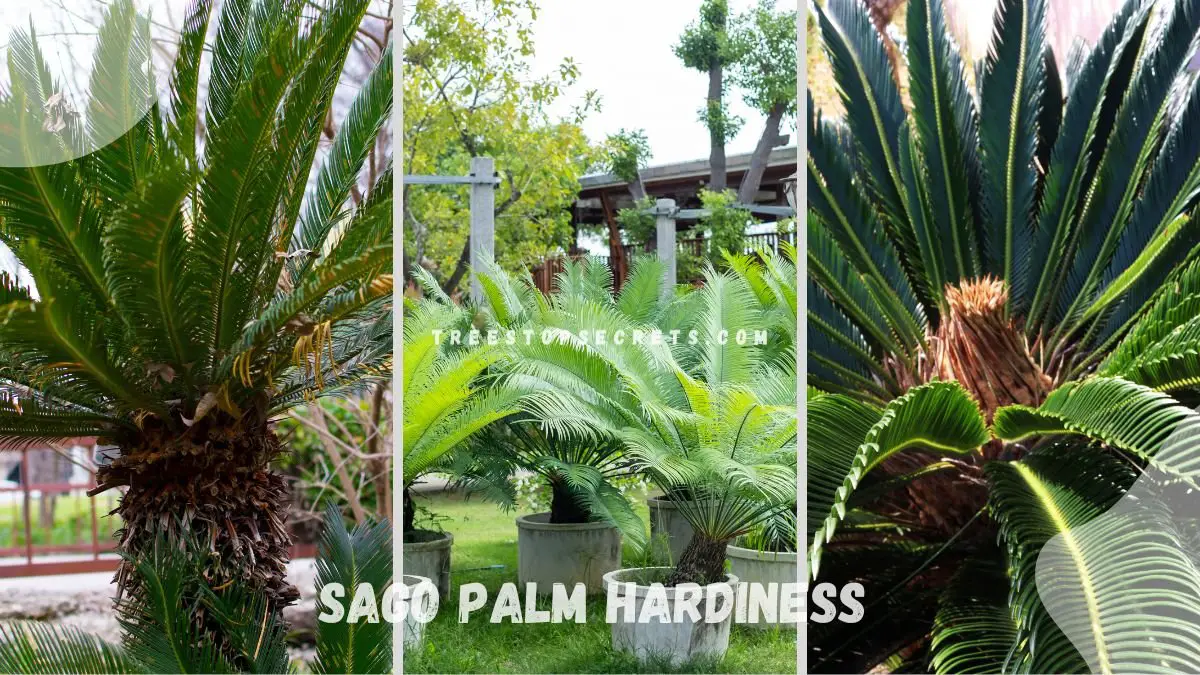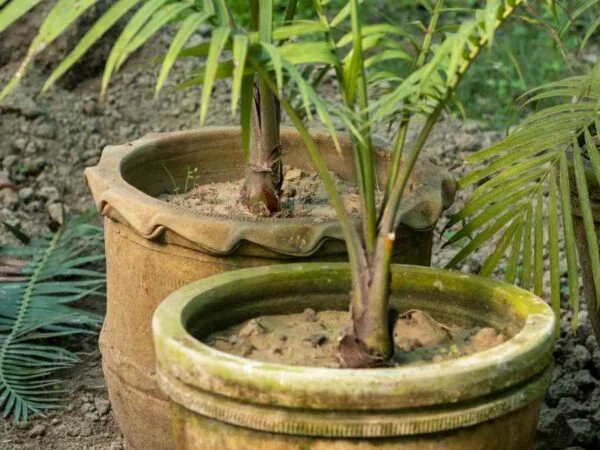Curious about sago palm hardiness? You’re in the right place. The sago palm (Cycas revoluta) is known for its resilience and ability to thrive in various conditions, making it a popular choice for gardens and landscapes. Whether you’re a seasoned gardener or just starting, understanding the hardiness of the sago palm can help you cultivate a healthy and vibrant plant. From temperature tolerances to soil preferences, I'll guide you through the key aspects of sago palm hardiness, ensuring your plant thrives and flourishes in its environment.
Sago palm hardiness refers to the plant's ability to withstand different environmental conditions. This hardy plant is tolerant to temperatures as low as 15°F (-9°C) and can thrive in USDA hardiness zones 8 to 11. It prefers well-drained soil and can handle both full sun and partial shade, though it performs best with some protection from intense midday sun. Watering should be moderate, allowing the soil to dry out between waterings to prevent root rot. In summary, sago palms are adaptable and can tolerate a range of conditions, making them a robust addition to various landscapes.
For more insights into cultivating a healthy sago palm and tips on optimizing its growth, explore our comprehensive guides. Whether you need advice on fertilization, pruning, or dealing with pests, we have you covered.
Key Takeaways
- Understand the cold hardiness of sago palms to ensure they thrive in your specific climate.
- Provide optimal growing conditions such as well-draining soil and adequate sunlight for healthy sago palm growth.
- Take proactive measures to protect sago palms during winter by providing insulation or moving them indoors.
- Regularly check for common challenges like pests and diseases to maintain sago palm health.
- Monitor the growth potential of King Sago Palm and adjust care accordingly to promote its development.
- Apply the knowledge gained from real-life success stories to enhance your sago palm care practices.
Understanding Sago Palm
Origins and Features
Sago Palms originate from Japan, known for their sturdy fronds and classification as cycads. These palms hold historical significance in traditional landscapes.
The unique features of Sago Palms, such as their sturdy fronds and cycad classification, set them apart from other palm trees. Originating from Japan, these palms have been a staple in traditional landscapes for centuries.
Historically, Sago Palms have played a vital role in traditional landscapes due to their unique features and resilience. Their classification as cycads further adds to their historical significance.
Importance in Landscaping
Sago Palms play a crucial role in enhancing tropical landscaping designs with their exotic appeal. Their versatility allows them to fit seamlessly into various landscaping styles.
In landscaping, Sago Palms are prized for their ability to enhance the tropical ambiance of any design. Whether in residential gardens or commercial spaces, these palms add an exotic touch.
The aesthetic appeal of Sago Palms is undeniable, making them a popular choice for both residential and commercial landscapes. Their versatility allows them to thrive in various styles, adding a touch of tropical beauty.
Exploring Cold Hardiness
Temperature Tolerance
Sago Palms can withstand temperatures ranging from 15 to 100 degrees Fahrenheit, making them adaptable to cooler climates. They thrive best in temperatures above freezing but can survive brief periods of frost. These palms adapt to different temperature conditions by adjusting their growth rate and conserving energy during colder seasons. Sago Palms have a protective layer on their leaves to minimize water loss and maintain moisture levels.
Highlighting the importance of protecting Sago Palms in extreme temperatures is crucial for their survival. During cold snaps, providing extra mulch around the base of the palm and covering it with a blanket can help insulate the plant and prevent frost damage.
Regional Adaptability
Sago Palms thrive best in regions with mild winters and warm summers, such as coastal areas with moderate humidity. They can be adapted to different climates by planting them in containers that can be moved indoors during colder months. Regions like Florida, Texas, California, and the Gulf Coast are where Sago Palms are commonly grown due to their favorable climate conditions. These regions provide the necessary warmth and protection from harsh winter conditions.
Growth Potential of King Sago Palm
Height and Spread
King Sago Palms can reach a height of 10 to 12 feet with a spread of 6 to 10 feet. Their slow growth rate contributes to their compact size. The unique growth pattern of Sago Palms sets them apart from other plants, showcasing a distinctive crown of feathery fronds. In landscaping, the towering height and wide spread of mature Sago Palms create a striking focal point, adding a touch of elegance to outdoor spaces.
Growth Rate
Sago Palms are known for their slow growth, typically growing only 2 to 4 inches per year. Factors such as temperature, sunlight exposure, and soil conditions influence their growth rate. Despite their sluggish growth, this characteristic benefits landscaping as it requires minimal pruning and maintenance. The gradual development of Sago Palms allows for long-term planning and design in outdoor settings.
Optimal Growing Conditions
Sunlight Needs
Sago palms thrive in bright, indirect sunlight, requiring at least four to six hours of light daily. Inadequate sunlight can lead to stunted growth and yellowing fronds, impacting the overall health of the plant. To ensure proper sunlight exposure, consider placing Sago Palms near east-facing windows or in areas with dappled shade.
Soil Preferences
For optimal growth, Sago Palms prefer a well-draining, sandy soil that is slightly acidic. The quality of the planting medium significantly affects the plant's health, with high-quality mediums promoting robust growth. Well-draining soil is crucial as it prevents waterlogged conditions that can lead to root rot in Sago Palms.
Watering Guidelines
Newly planted Sago Palms require regular watering to establish their roots. Deep watering is essential to encourage root growth and ensure the plant's overall health. Monitoring soil moisture levels is key; water when the top inch of soil feels dry to the touch to prevent overwatering, which can cause root damage.
Ensuring Sago Palm Health
Fertilization
Fertilization plays a crucial role in handling Sago Palm to ensure its health and vitality. Balanced fertilizer provides essential nutrients for robust growth and development. Applying slow-release fertilizer during the growing season helps sustain nutrient availability over time, supporting the long-term health of Sago Palms. Proper fertilization enhances the plant's resilience to environmental stressors and promotes vibrant foliage.
One of the key aspects of fertilizing Sago Palms is timing. Applying slow-release fertilizer in early spring before new growth emerges is ideal. This timing aligns with the plant's natural growth cycle, allowing it to utilize nutrients efficiently as it enters the active growing phase. Consistent and timely fertilization contributes to strong root development and overall plant vigor.
Benefits of proper fertilization for Sago Palm health are manifold. It ensures that the plant receives essential nutrients such as nitrogen, phosphorus, and potassium in appropriate quantities. These nutrients are vital for various physiological processes within the plant, including photosynthesis, root development, and disease resistance. Well-fertilized Sago Palms exhibit lush, green foliage and robust growth, enhancing their visual appeal in garden landscapes.
Pruning Practices
When it comes to pruning Sago Palms, it is essential to follow best practices to maintain plant health. Regular pruning helps remove dead or damaged fronds, promoting air circulation and reducing the risk of pest infestations. Trimming back yellowing or browning fronds not only improves the plant's aesthetic appearance but also redirects energy towards new growth.
To maintain the optimal growing conditions discussed earlier, pruning should be done carefully to avoid injuring the plant. Using sharp, sterile tools minimizes damage and prevents the spread of diseases between plants. Removing spent flower stalks and any discolored fronds can rejuvenate the plant's appearance and encourage new growth. Pruning also helps control the size of the plant and prevents overcrowding in garden settings.
Pest Management
Effective pest management is crucial for preserving the health of endangered palm species like Sago Palms. Regular inspection of plants helps detect early signs of pest infestations such as scale insects or mealybugs. Natural predators like ladybugs can be introduced as a biological control method to reduce pest populations without harming the environment.
Implementing cultural practices such as maintaining proper hygiene around plants, avoiding overwatering, and providing adequate sunlight can help prevent pest issues. In cases where chemical intervention is necessary, using targeted insecticides approved for use on palms can effectively control pests while minimizing harm to beneficial insects. Vigilance and proactive pest management strategies are key to safeguarding the well-being of high-quality palm trees like Sago Palms.
Winter Care for Sago Palm
Temperature Protection
Sago palms are sensitive to cold temperatures, making it crucial to protect them during winter. Seasonal palms like sago palms can suffer damage or even die if exposed to freezing temperatures. To safeguard them, consider wrapping the palm with burlap or frost cloth when temperatures drop below 50°F.
To provide additional warmth, patio palms can benefit from being moved indoors during the winter months. Place them in a well-lit area away from drafts and heaters to prevent stress on the plant. Avoid placing them too close to windows as the cold air can harm the leaves.
Moisture Control
During winter, it's essential to monitor the moisture levels around sago palms. While they require regular watering in warmer months, reduce watering frequency in winter to prevent overwatering. Overly wet soil can lead to root rot, impacting the health of the palm.
Consider using a well-draining potting mix to ensure excess water doesn't accumulate around the roots. Avoid misting the leaves during winter as this can increase humidity levels around the plant, potentially leading to fungal diseases.
Common Challenges
Cold Damage Signs
Sago palms can suffer cold damage when exposed to temperatures below 15°F, leading to brown or black leaves. The plant may also exhibit wilting and browning of fronds due to frost.
Signs of cold damage on a sago palm include blackened or mushy stems, drooping leaves, and brittle foliage. These symptoms are indicators of the plant's struggle with freezing temperatures.
Recovery Tips
To help your sago palm recover from cold damage, trim any affected leaves and stems. Ensure the plant is placed in a warm location with indirect sunlight to aid in its recuperation.
Create a protective barrier around the sago palm using burlap or frost cloth to shield it from further cold exposure. Provide regular watering and fertilization to support new growth and overall health.
FAQs on Sago Palm Care
Best Practices
Sago palms thrive in well-draining soil and bright, indirect sunlight. Water them sparingly, allowing the soil to dry out between waterings. Fertilize with a balanced palm fertilizer every few months during the growing season.
- Use a well-draining potting mix
- Provide consistent watering routine
- Ensure adequate sunlight exposure
To encourage healthy growth, consider repotting your sago palm every 2-3 years. Prune any yellowing or damaged fronds regularly to promote new growth. Protect these plants from temperatures below 50°F (10°C) as they prefer warm climates.
Avoiding Common Mistakes
Overwatering is a common mistake that can lead to root rot in sago palms. Ensure the plant's container has drainage holes to prevent waterlogging. Avoid placing sago palms in drafty areas or direct sunlight, as this can cause stress and leaf burn.
- Watch out for signs of overwatering
- Provide proper drainage to prevent root rot
- Avoid extreme temperature fluctuations
Another mistake to avoid is using heavy, compacted soil that retains too much moisture. This can suffocate the roots and lead to various issues like nutrient deficiencies and stunted growth. Regularly check for pests like scale insects and spider mites, which can harm sago palms if left unchecked.
Real-Life Success Stories
Case Studies
Customer reviews of sago palms thriving in various climates showcase their hardiness. For instance, a gardener shared how their sago palm survived an unexpected frost. Despite the harsh conditions, the plant rebounded quickly and continued to grow vigorously.
In another case, a homeowner described how their sago palm withstood a prolonged drought without showing signs of distress. This resilience highlights the adaptability of sago palms to different environmental stressors, making them a popular choice for gardeners seeking low-maintenance plants.
Gardener Insights
Experienced gardeners often emphasize the importance of proper care in enhancing the hardiness of sago palms. They recommend well-draining soil to prevent waterlogged roots, which can lead to rot. Regular fertilization with a balanced formula helps promote healthy growth and strengthens the plant's ability to withstand adverse conditions.
Gardeners also suggest monitoring the temperature fluctuations in your region to protect sago palms during extreme weather events. Providing adequate shelter during winter or summer can prevent damage and ensure the plant's long-term survival. By following these tips, gardeners can maximize the results of their sago palm cultivation efforts.
Summary
Understanding the hardiness of sago palms is crucial for ensuring their health and growth potential. By exploring the factors that influence their cold tolerance and providing optimal growing conditions, you can nurture these plants effectively. Winter care plays a significant role in safeguarding sago palms during harsh weather conditions, while being aware of common challenges and implementing the right care strategies can lead to successful outcomes. Remember, a proactive approach to sago palm care will not only enhance their beauty but also contribute to their longevity and resilience.
Take charge of your sago palm's well-being by applying the insights shared in this guide. Implementing the recommended practices and staying attuned to your plant's needs will result in thriving sago palms that beautify your space year-round. Ensure your sago palms flourish by putting this knowledge into action today!
Frequently Asked Questions
Can Sago Palms Survive Cold Weather?
Yes, Sago palms are hardy in USDA zones 8-11. They can tolerate temperatures as low as 15°F (-9°C) for short periods with protection like mulching and covering.
How Often Should I Water My Sago Palm?
Water your Sago palm deeply but infrequently. During the growing season, water it once every 7-10 days, adjusting based on weather conditions and soil moisture levels.
Should I Fertilize My Sago Palm?
Fertilize your Sago palm sparingly to avoid nutrient toxicity. Use a balanced slow-release fertilizer in spring and summer, following the manufacturer's instructions for application rates.
How Do I Propagate Sago Palms?
Sago palms can be propagated through seeds or offsets (pups). Seeds take longer to mature while offsets can be separated from the parent plant and replanted in well-draining soil.
Are Sago Palms Toxic to Pets?
Yes, all parts of the Sago palm are toxic to pets if ingested. Keep your pets away from Sago palms to prevent poisoning, which can be fatal if not treated promptly.
Image Source: Paid image from CANVA





